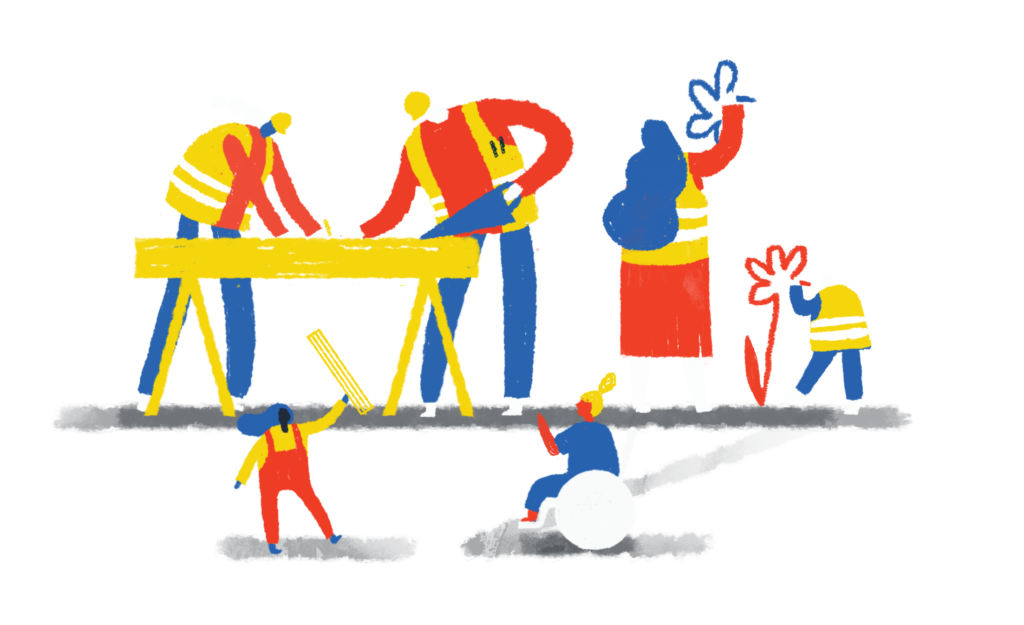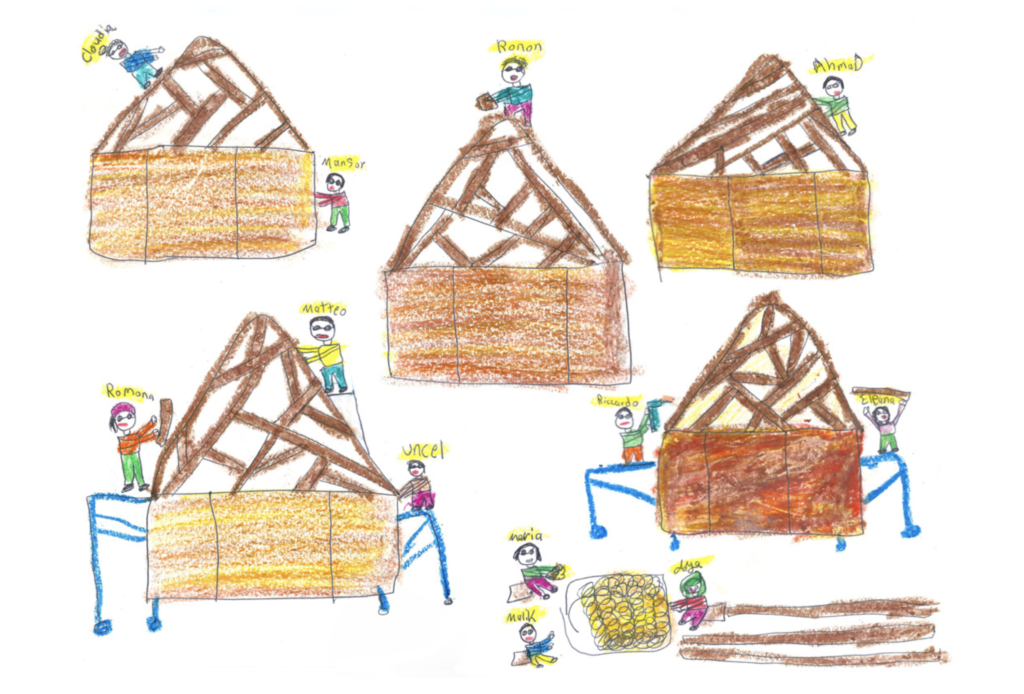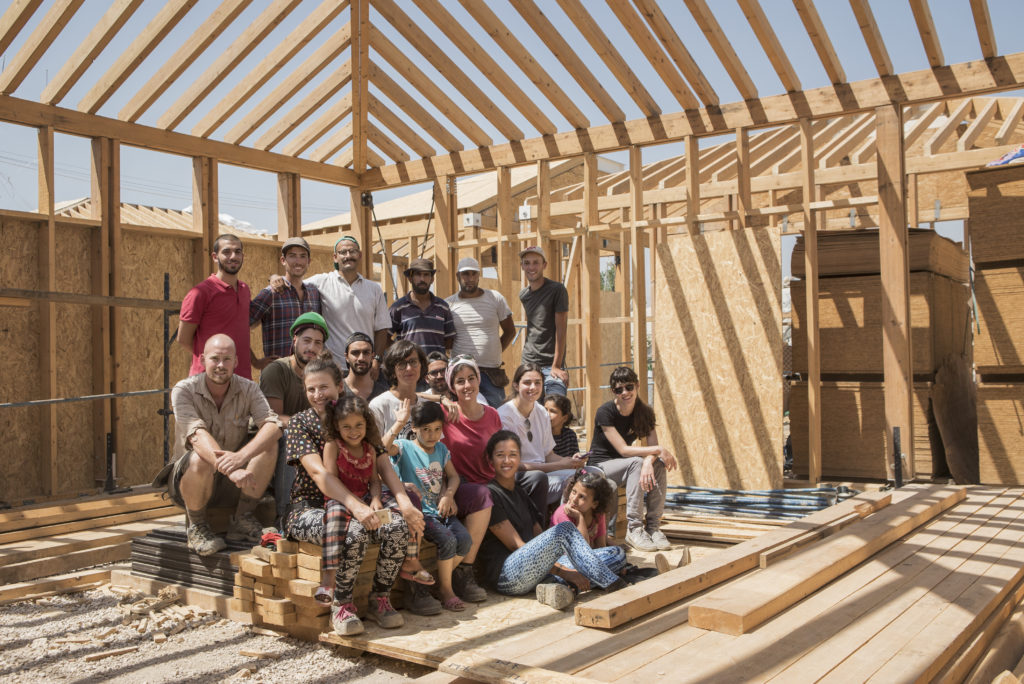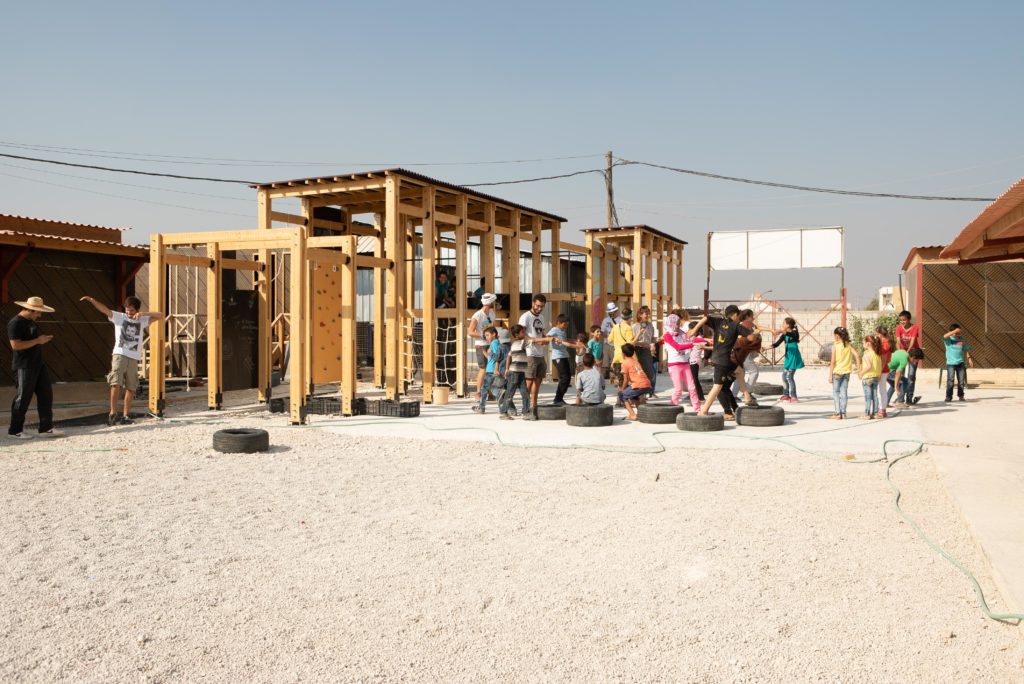
Key points
Building with children and communities is an empowering experience that requires careful planning.
Building with children and communities is an empowering activity for all involved, and can help create long lasting relationships. Moreover, it is one of the most effective ways to ensure community ownership and the long-term maintenance of the space. Collaborative building need not be confined to only hiring local labour, it can be an activity that practitioners carry out together with the community, learning from each other. During such activities, the implementing organisation may be able to take an active part in the construction, rather than purely giving direction. Engagement as equals on the construction site can generate positive dynamics, mutual respect and trust.
When children see their caregivers engaged in building something for them, they develop a sense of attachment to the place. They get excited to see the building taking shape. The construction can become a daily performance, where the children – through their design participation – wrote the script and know the key actors playing. This can be an empowering and inspiring experience where children realise they have the power and the right to shape their world.
In CatalyticAction’s Jarahieh school project, children created imaginary stories inspired by the building team and the activities happening daily. Children were excited about the new school and were proud to see their caregivers and siblings working on the construction site.

This form of community engagement in construction is rare, however, as it poses some challenges:
It can be costly for the implementing organisation as team members must spend multiple days on site with the community;
There could be insurance implications (higher premium costs) for allowing staff to work on the construction site;
Many organisations do not have staff trained for this type of activity, as building work is usually contracted to construction companies;
It can take longer to complete the built intervention this way, because it includes coordinating and organising several community activities.
Despite the difficulties, it is still possible, and valuable, to conduct collective building activities during the construction phase.
A carefully considered construction plan must be in place for this type of community engagement to succeed. Collective building activities should be deliberatively placed at different stages of the construction process. The following are examples of possible, simple and low-cost activities that can be organised with community members on a building site:
Mural painting;
Hands-on design and installation of certain elements (e.g. seating areas, furniture);
Decorating elements (e.g. furniture, wall panels);
Planting.
The choice of materials, decided during the design phase, affects the type of activities that are possible and safe to be conducted with community members. For example, if an intervention is designed using mostly timber, it may be easier to engage the community than if the main material is steel. Steel requires highly skilled labour and substantial safety measures to be in place, while timber is easier to work with.
Children can also actively participate in the construction, and there are many safe and structured activities that can enable this. Children should not participate in construction phases where hazards are present, such as ground works, concrete pouring, etc. Other phases, such as building furniture and finishing, may be safer. Nevertheless, children can visit the site throughout the building process in a controlled way, which allows them to see the progress of the elements they suggested during the design phase.

It is obviously fundamental that visits and activities are safe for children, and that the construction site is adequately equipped with hazard protection (e.g. any ground excavations are covered, scaffolding has been removed or adequately protected).
Examples of building activities involving children include:
Wood working with safe tools to assemble elements of the intervention (e.g. furniture);
Painting intervention elements (using safe paint);
Planting.
When children visit the site, the facilitator should:
- Give children a tour of the construction site;
- Explain why they are on site (e.g. to build, to learn and enjoy their day);
- Conduct a warm up activity (see box 10);
- Conduct the core activities (e.g. building, site visit);
- Conduct a wind down activity.
It is useful to display on site a 3D visualisation of the final outcome, highlighting children’s contributions from the participatory design activities. This visualisation alongside being physically present onsite helps children to gain a greater sense of control over the space. Seeing the space being built helps children visualise how their ideas are being transformed into physical outputs. The facilitator and building team should discuss with the children any questions they have about the design and construction. In some cases, it may still be possible to integrate children’s feedback into the design. However, it is important to manage children’s expectations before asking for suggestions, as it is likely that only minor changes will be possible once construction has started. These activities can engage children and their caregivers simultaneously.
During CatalyticAction’s Ibtasem playground construction, one participating child was very energetic; though his teachers had previously told the facilitator that he was disobedient. During the classroom-based participatory design activities he hadn’t been very engaged, but during the construction he took his tasks very seriously. He had understood that he had a responsibility and that his contribution was important.

Children can develop a sense of ownership towards the project through simple activities, like packing and unpacking construction equipment. The Flying Seagull project clowns engage children in performances, but also in the erection and removal of the temporary stage. These simple acts gives children a sense of ownership towards the space and the activity carried out.
If the construction is carried out by a contractor, it is important to inform them of such community activities early on so that they can safely plan the activities into the construction timeline.
While there are many benefits in involving children in structured construction activities, there are important considerations to make in terms of child labour and safeguarding issues. In many contexts, displaced children work in order to support their families, and it may be difficult for children or external actors to distinguish between the participation of children in the construction process as a learning activity, and other forms of paid labour.
Moreover, in contexts where building contractors routinely employ underage apprentices, contractors may find it difficult to understand why they are banned from using child labour while they see children on site. Caregivers, other community members, and institutions (school, municipalities) need to be involved in discussions regarding children’s participation in the construction, in order to ensure that children and their wellbeing remains paramount.



